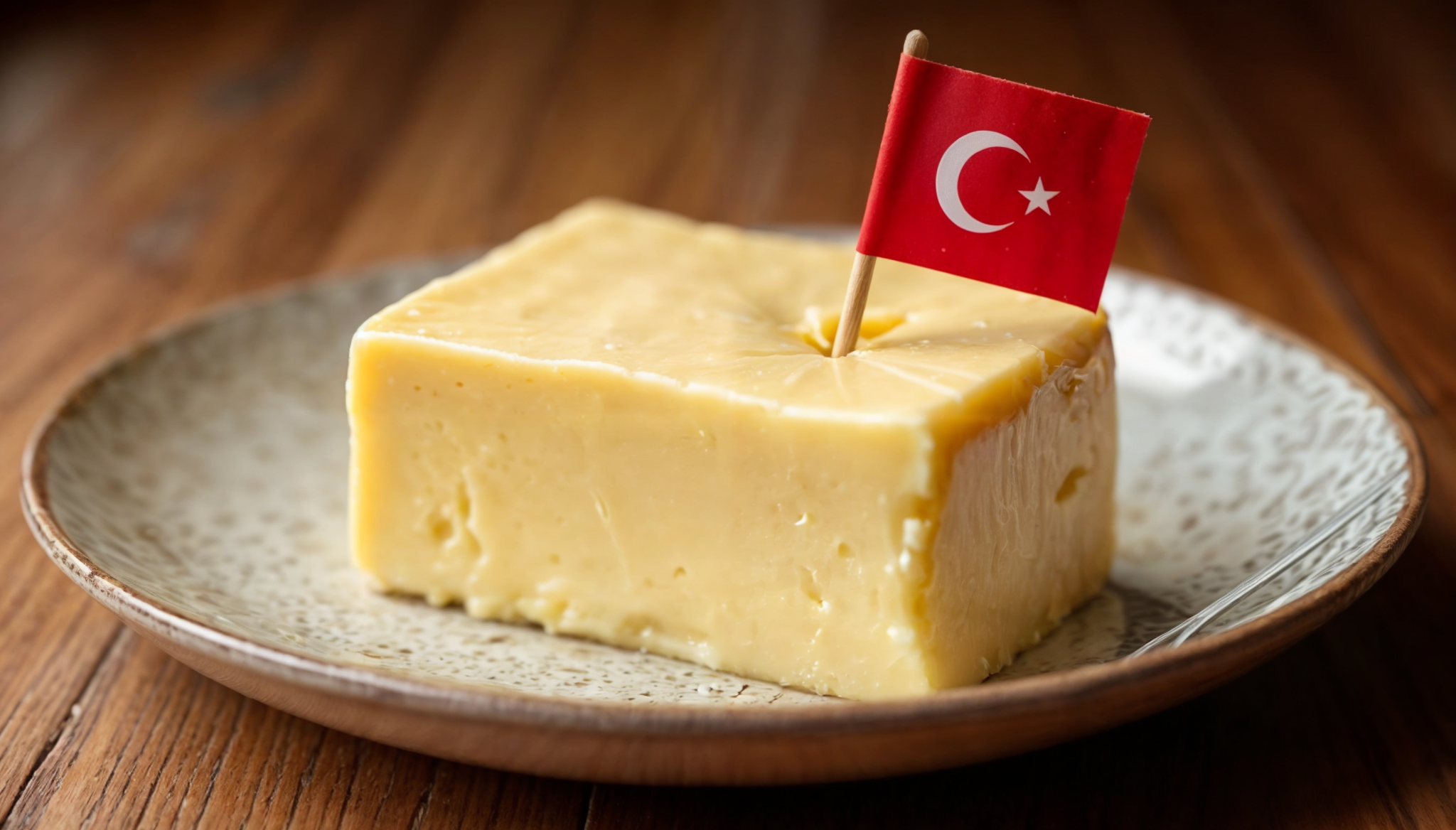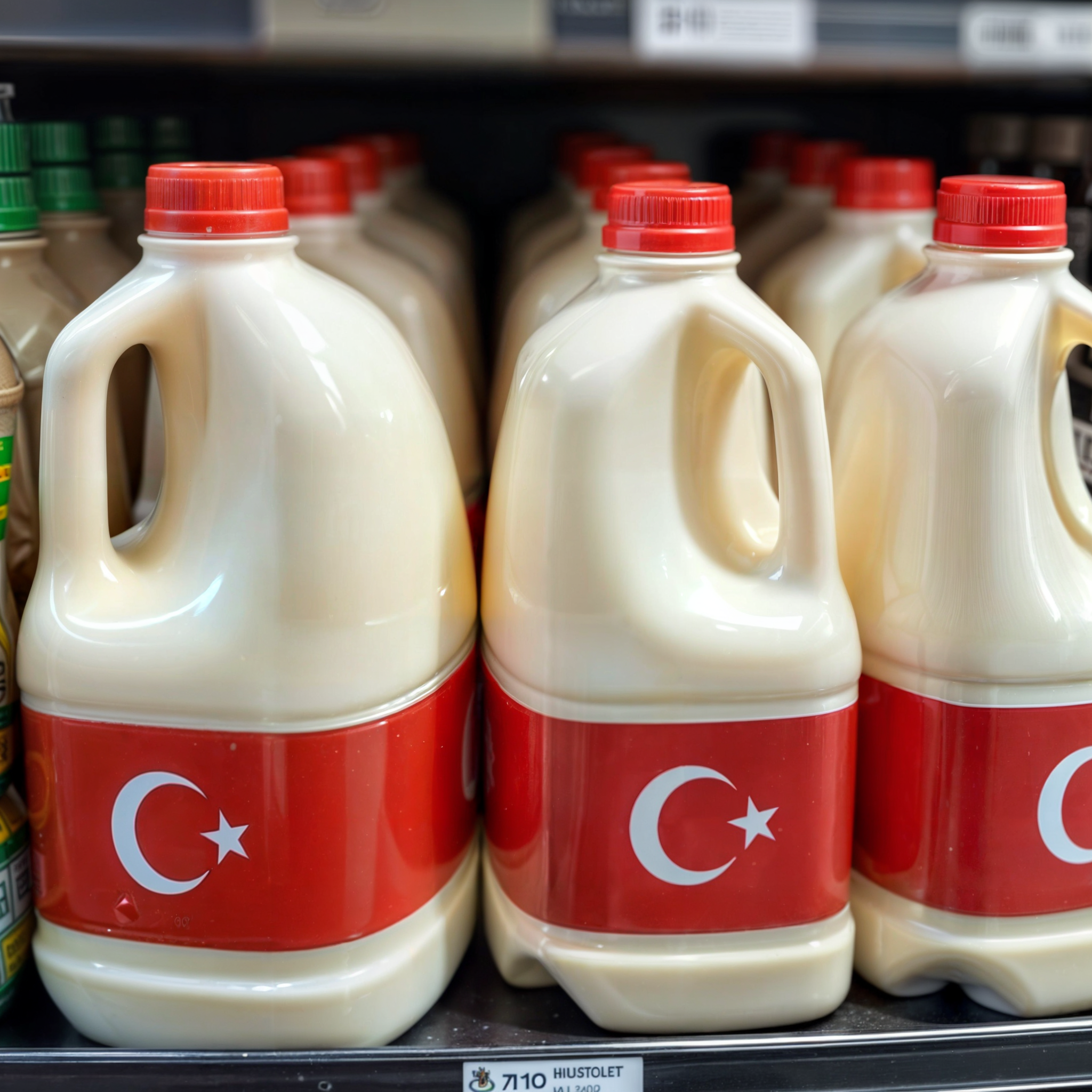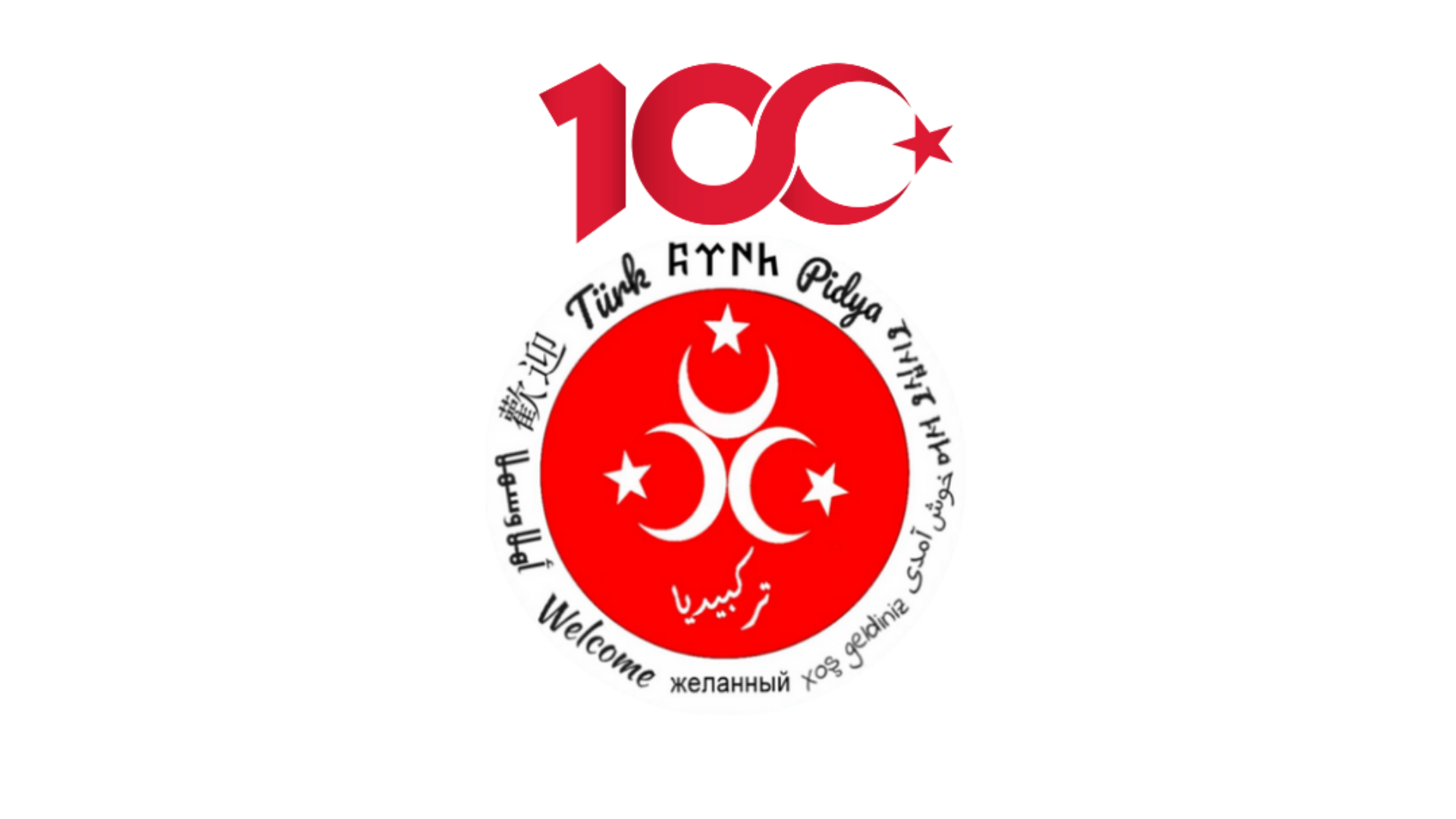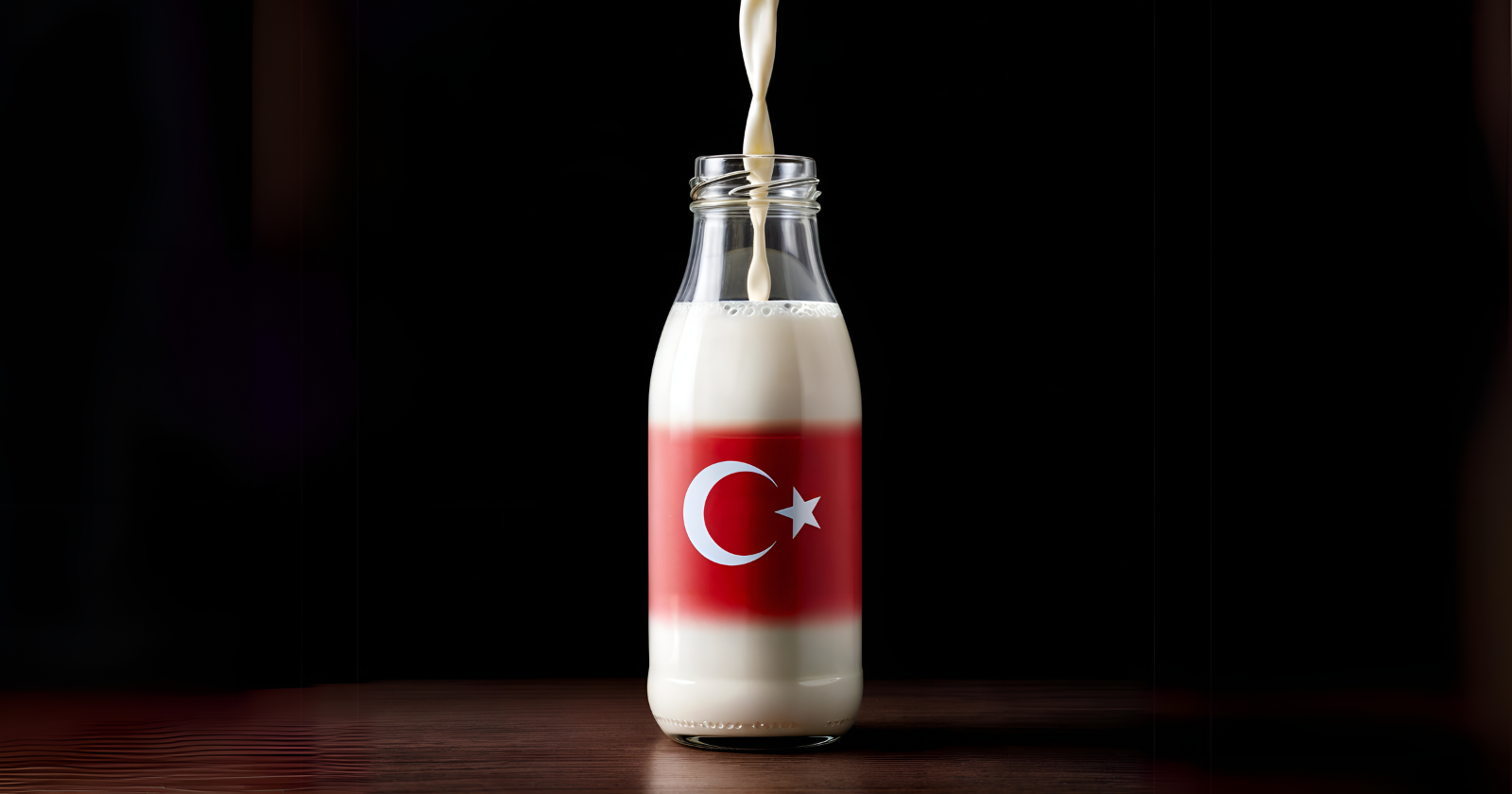Table of Contents
Step off the plane in Türkiye and one of the first things you’ll notice is the abundance of dairy products. From creamy yogurt (yoğurt) served with almost every meal to the ubiquitous and refreshing ayran, a salty yogurt drink perfect for combating the Turkish sun, dairy is deeply intertwined with Turkish culture and cuisine. For centuries, Turks have been masters of transforming milk into an array of delicious and nutritious staples. The creamy tang of yogurt graces breakfast tables, adds richness to savory dishes, and forms the base of countless dips and sauces. And who could forget the invigorating gulp of ayran, a thirst-quenching beverage that perfectly complements spicy kebabs and savory pastries?

This deep-rooted appreciation for dairy isn’t just a culinary tradition; it’s a reflection of Turkey’s significant role in global milk production. As the 8th largest milk producer worldwide and the 3rd largest in Europe, Türkiye plays a crucial role in the global dairy landscape. But behind the impressive figures and familiar flavors lies a complex and dynamic industry, a tapestry woven from large-scale corporations, small family farms, and centuries-old traditions. So, let’s pull back the curtain and explore the fascinating world of Turkish dairy, exploring the key players, the production trends, and the challenges faced by those who bring milk, yogurt, and ayran to our tables. From the sprawling factories of industry giants to the humble barns of family-run operations, we’ll uncover the stories behind the milk that sustains a nation.
Turkish Dairy Industry: A Colorful Adventure!
- AK Gıda: Market leader with a daily milk processing capacity of 5,000 tons
- Sütaş: One of the largest domestic dairy companies in Turkey
- Pınar Süt: The first company to introduce long-life milk in Turkey
- SEK (Tat Gıda): Significant contributor to national milk production
- Danone: International brand with a strong presence in Turkey
- Total Milk Production (2023): 21,481,567 tons (0.4% decrease from 2022)
- Cow Milk: Dominates with 92.9% of total production
- Sheep Milk: 4.3% of total production
- Goat Milk: 2.5% of total production
- Buffalo Milk: 0.2% of total production
- June 2024: 921,867 tons of cow milk collected (6.4% increase from June 2023)
- Climate Change: Impact on pastureland and water availability
- Rising Feed Costs: Main expense for dairy farmers
- Price Fluctuations: Balancing production costs and sales prices
- Small Farms Issues: Struggles to compete with larger companies
- Government Policy: Balancing support for producers and affordability for consumers
- Ayran: Production increased by 9% in June 2024 compared to the previous year
- Yogurt: Production increased by 10.1% in June 2024
- Cheese: 5.7% increase in production in the first half of 2024
- Drinking Milk: Slight decrease in production, possibly due to alternative milk options
Created by Turkpidya – Your Digital Encyclopedia of Turkey
Major Players in the Turkish Dairy Industry
When it comes to the Turkish dairy industry, a handful of giants dominate the landscape. These companies, with their extensive reach and impressive production capabilities, are responsible for bringing a vast array of “süt” (milk) and “peynir” (cheese) products to Turkish consumers. Let’s meet the big players:
1. AK Gıda: Considered the undisputed leader, AK Gıda boasts a staggering daily milk processing capacity of 5,000 tons, spread across six strategically located production facilities throughout the country. This powerhouse of the industry not only supplies a wide range of dairy products but also plays a significant role in the Turkish economy.
2. Sütaş: A truly homegrown hero, Sütaş stands tall as one of Turkey’s largest domestic milk companies. Its commitment to quality and innovation has earned it a loyal following, and its 2019 revenue of 3.8 billion TL (approximately 639 million USD) speaks volumes about its success.
3. Pınar Süt: This company holds a special place in Turkish dairy history, as it was the first to introduce long-life milk (UHT milk) to the country. Pınar Süt’s portfolio extends beyond just milk, encompassing a diverse range of products, including yogurt, ayran, cheese, and even fruit juices.
4. SEK (Tat Gıda): While perhaps not as widely recognized as some of its counterparts, SEK remains a significant player in the Turkish dairy industry, contributing substantially to the nation’s milk production.
5. Danone: Although an international brand, Danone has carved out a significant market share in Türkiye. Its global reputation for quality and innovation has resonated with Turkish consumers, solidifying its position as a key player in the local market.
Beyond these major players, the Ulusal Süt Konseyi (National Milk Council) lists numerous other important contributors to the Turkish dairy scene, including:
- Akova Süt
- Aynes Gıda
- Bahçıvan Gıda
- Balkan Süt Ürünleri
- Eker Süt Ürünleri
- Ekici Peynir
- Enka Süt
- Gönenli Süt
- Muratbey Peynirleri
- Özgüllü Süt Mamülleri
- Teksüt
These companies, both large and small, form the backbone of the Turkish dairy industry, ensuring that a steady supply of fresh, delicious dairy products reaches the tables of millions across the country. However, as we’ll see in the next section, the industry isn’t without its challenges, and the smaller players often face an uphill battle in this competitive market.
Milk Industry Terms in Turkey
The Little Guys: Family Farms and the Backbone of Turkish Dairy
While the giants of the Turkish dairy industry command attention with their large-scale operations, it’s the smaller, family-run farms that truly form the backbone of this vital sector. These “Küçük Aile İşletmeleri” (Small Family Businesses), often passed down through generations, represent the heart and soul of Turkish dairy production. They are the keepers of tradition, nurturing their herds and meticulously crafting “çiğ süt” (raw milk) into the beloved yogurt, ayran, and cheeses that grace Turkish tables.
However, these hardworking families face an increasingly challenging landscape. The data paints a stark picture of the struggles they endure: rising production costs, stagnant selling prices, and a constant struggle to remain profitable in a market dominated by larger players.

Challenges Faced by Small Family Farms:
- Rising Production Costs:
- The cost of producing one liter of “çiğ süt” (raw milk) has been steadily increasing.
- This is largely due to the rising cost of “süt yemi” (cattle feed), which increased by 0.7% in July 2024 alone.
- Stagnant Selling Prices:
- Small farmers often lack the negotiating power to secure favorable selling prices for their milk.
- This leaves them vulnerable to price fluctuations and squeezed profit margins.
- Competition from Larger Enterprises:
- Larger dairy companies often have economies of scale and greater market access, making it difficult for small farms to compete.
Comparing Private Enterprises (Özel Hayvancılık İşletmeleri) and Small Family Farms:
- Production Costs (July 2024):
- Private Enterprise (165 cows): 16.15 TL per liter of raw milk
- Small Family Farm (15 cows): 13.90 TL per liter of raw milk
- Selling Price Changes (July 2024 compared to June 2024):
- Private Enterprise: 7.2% decrease
- Small Family Farm: 2.5% increase
Key Takeaways:
- Small family farms are essential to the Turkish dairy industry, but they face significant challenges.
- Rising production costs and stagnant selling prices are squeezing their profit margins.
- Support is needed to ensure the survival and prosperity of these vital producers.
Production Trends and Challenges: Navigating the Rough Seas of the Dairy Industry
While Türkiye boasts a significant standing in global milk production, the industry isn’t immune to challenges. Analyzing the recent trends reveals a complex picture, with both opportunities and obstacles shaping the future of Turkish dairy.
One notable trend is the slight dip in overall milk production in 2023, which saw a total of 21,481,567 tonnes of “çiğ süt” (raw milk) produced—a 0.4% decrease from the previous year. This subtle shift, while seemingly insignificant, hints at the underlying pressures impacting the industry.
Breaking Down the Production:
Understanding the sources of milk production in Turkey reveals further insights:
- Cow’s Milk: The dominant source, accounting for a staggering 92.9% of total milk production.
- Sheep’s Milk: Contributing 4.3%, primarily used for specialty cheeses and yogurt.
- Goat’s Milk: Representing 2.5%, often sought after for its unique flavor and properties.
- Buffalo Milk: A minimal contributor at 0.2%, primarily used for traditional products like “kaymak” (clotted cream).
Interestingly, 2023 saw an increase in goat and cow milk production, while sheep and buffalo milk production declined. This shift could indicate changing consumer preferences, economic factors influencing farming choices, or even environmental impacts on specific livestock.
Riding the Wave of Demand: A Look at Milk Processing in June 2024
Stepping into a bustling Turkish supermarket, you’re met with a dazzling array of dairy products – creamy yogurt varieties, colorful ayran displays, and tempting cheese counters. This abundance is a testament to the tireless work of Turkish dairy processors, who transform raw milk into the beloved staples that grace Turkish tables. And the data tells an interesting story about their recent activities.
In June 2024, integrated dairies collected a whopping 921,867 tonnes of cow's milk – a significant increase of 6.4% compared to June 2023. This surge in collection reflects a growing demand for processed dairy products. Zooming out to the first half of the year, the numbers are even more impressive. Between January and June 2024, collected cow's milk skyrocketed by 8.1% compared to the same period in 2023. Clearly, Turkish consumers are embracing dairy products, prompting processors to ramp up their operations.
But it's not just about quantity. Looking at specific product trends reveals a fascinating shift in consumption patterns:
- Ayran and Yogurt Reign Supreme: Production of the refreshing yogurt drink "ayran" and the ever-popular yogurt witnessed impressive increases of 9% and 10.1% respectively in June 2024 compared to the previous year. This suggests a growing preference for these traditional, healthy options.
- Cheese Holds Steady: While cheese production dipped slightly in June 2024, the overall trend for the first half of the year reveals a 5.7% increase compared to the previous year. This indicates a continued love affair with Turkish cheese varieties.
- Drinking Milk Dips Slightly: Interestingly, drinking milk production saw a slight decline in June 2024 compared to the previous year. This could be attributed to various factors, including the rising popularity of plant-based milk alternatives or a shift towards consuming milk in other forms, like yogurt or ayran.

Unpacking the Challenges:
The complexities of the Turkish dairy industry are directly reflected in the challenges faced by both large corporations and small family farms. Several key factors contribute to these challenges:
- Climate Change: Increasing temperatures and unpredictable weather patterns impact grazing pastures and water availability, directly affecting milk yields and increasing production costs.
- Rising Feed Costs: The cost of "süt yemi" (cattle feed) is a major expense for dairy farmers. Global commodity price fluctuations and local supply chain issues directly impact "üretim maliyeti" (production costs).
- Fluctuating "Süt Satış Fiyatı" (Milk Selling Price): The delicate balance between production costs and selling prices is crucial for profitability. Small farms, in particular, face challenges in negotiating fair prices for their milk, often at the mercy of larger buyers.
- Government Policies: Government subsidies, regulations, and import/export policies play a significant role in shaping the dairy industry's landscape. Striking a balance between supporting local producers and ensuring affordable prices for consumers remains a constant challenge.







